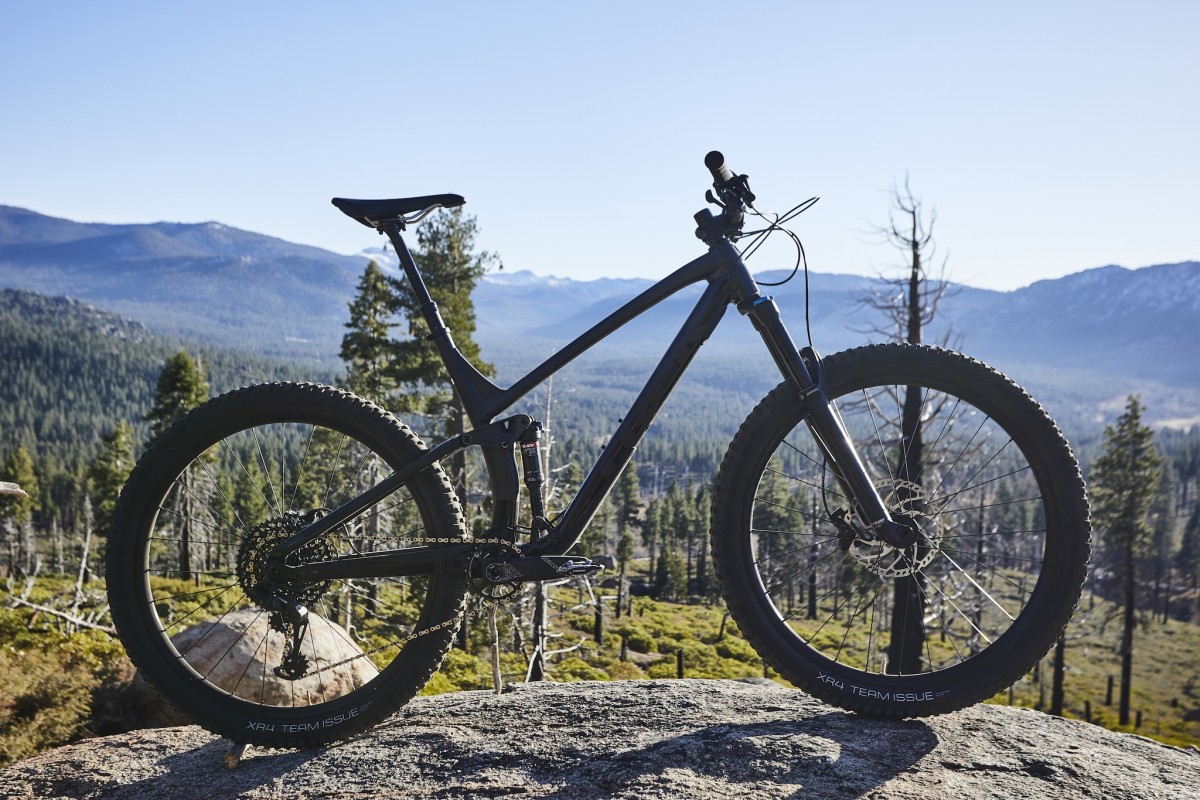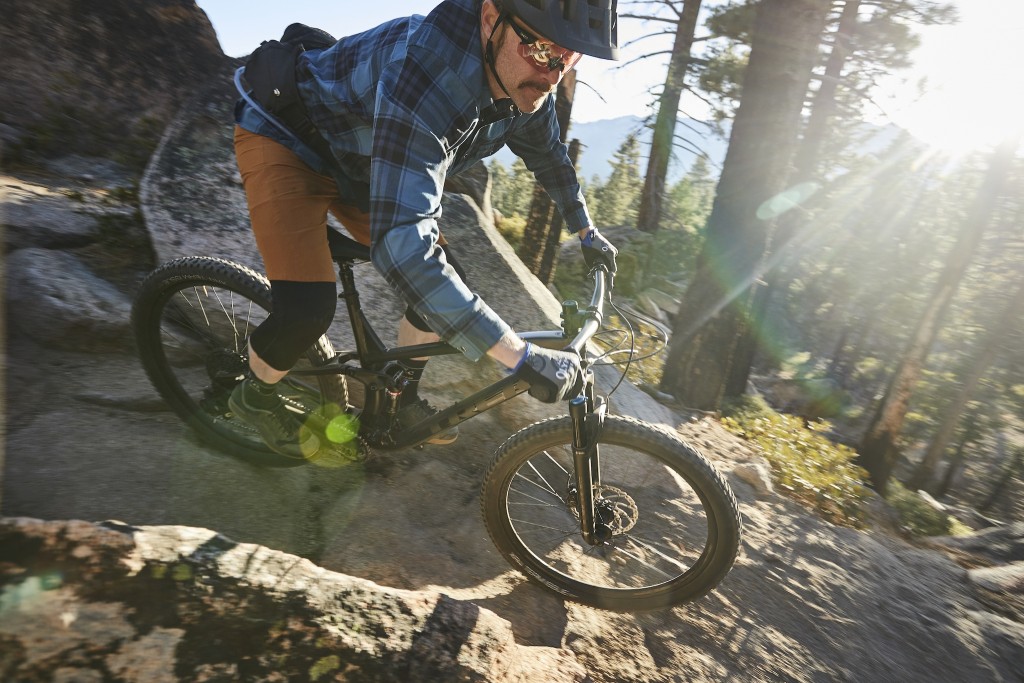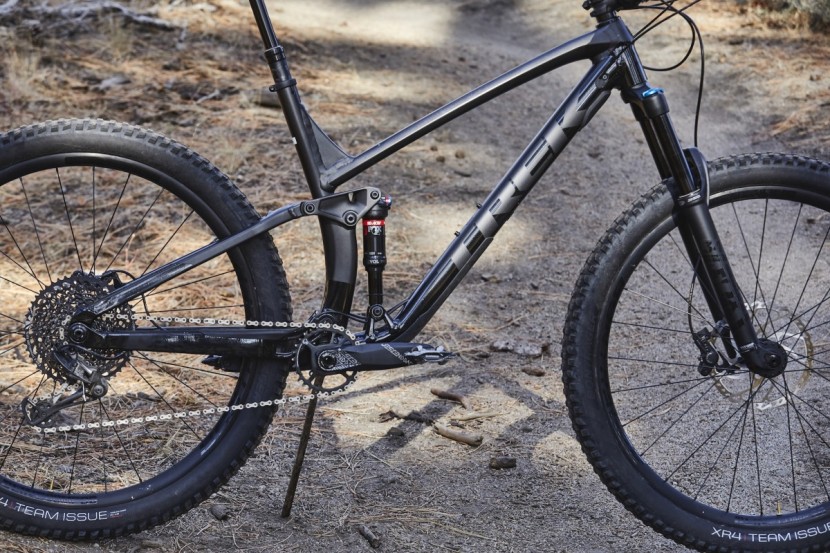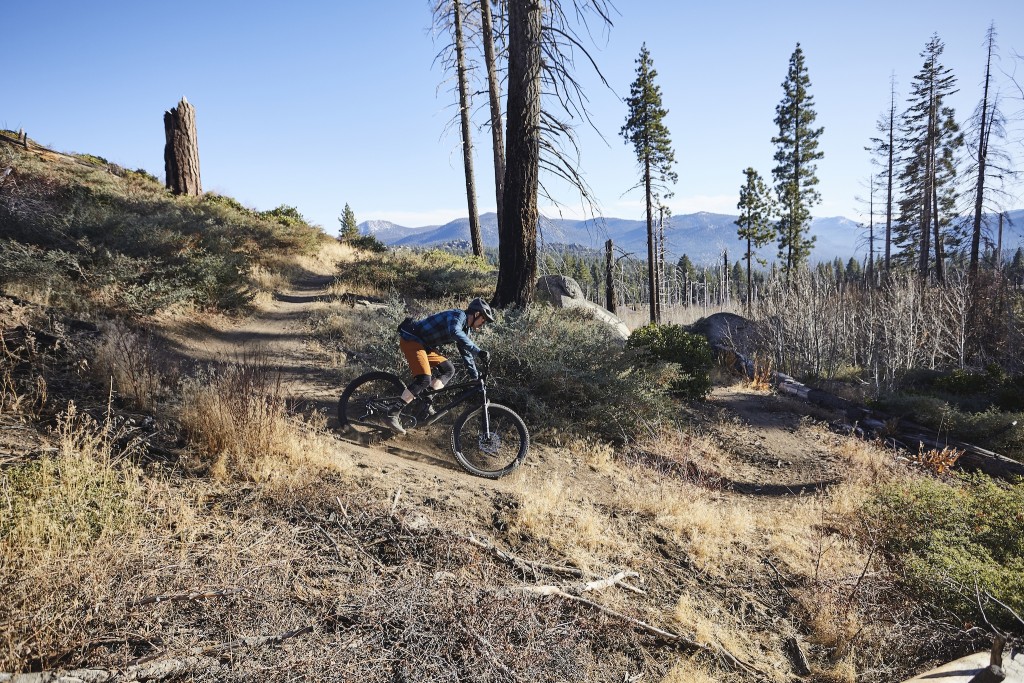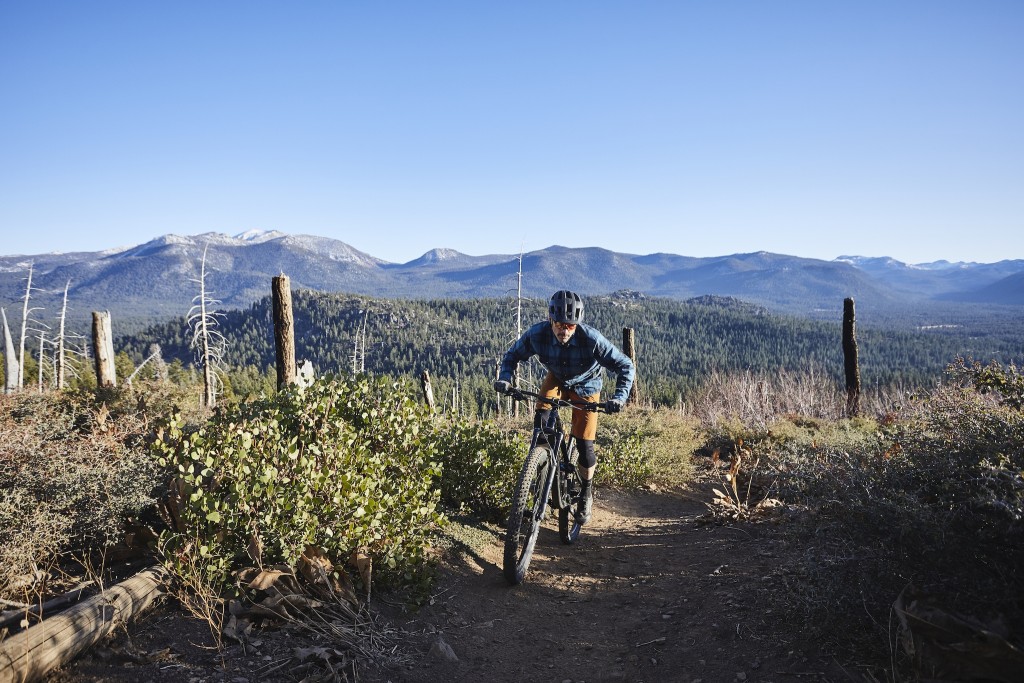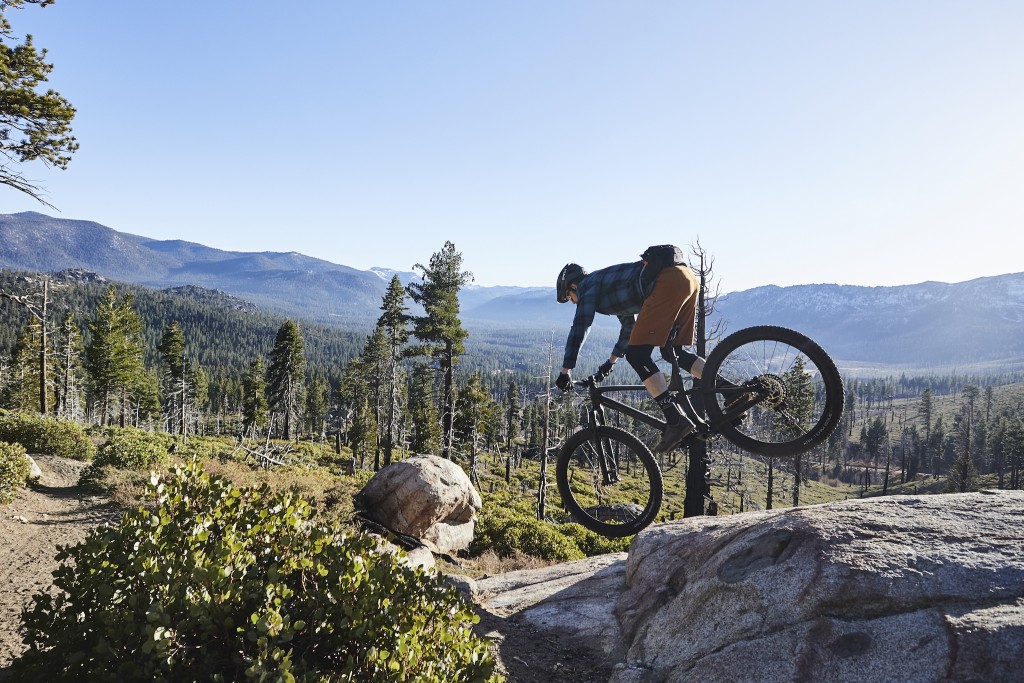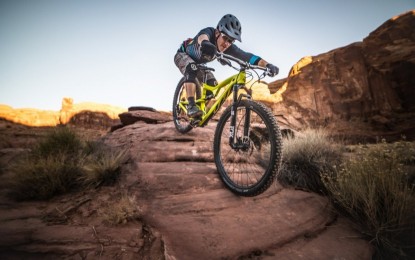Trek Fuel EX 8 Review
Our Verdict
Our Analysis and Test Results
Trek recently updated the popular Fuel EX models for the 2023 model year, and they are called the Fuel EX Gen 6. The frame has been completely redesigned with more travel, a new highly adjustable geometry, and an in-frame storage compartment. The version reviewed here, Gen 5, is still widely available. We hope to get our hands on the latest version for review in the near future. -November 2022
Should I Buy This Bike?
Trek redesigned their popular range of mid-travel Fuel EX trail bikes for 2020 with major changes to the geometry and the ABP rear suspension design. The new Fuel EX models, including the EX 8 we tested, are in line with modern trail bike geometry trends, plus they've been given a bump in front suspension travel with 140mm travel forks paired with 130mm of rear-wheel travel. The ABP (Active Braking Pivot) suspension design provides a supportive pedaling platform, great small bump sensitivity, composed big hit performance, and is unaffected by braking forces. Trek makes bikes for the masses, and despite lengthening and slackening the Fuel EX the geometry remains relatively middle of the road by today's standards, though this isn't necessarily a bad thing. This bike has an easy-going demeanor with predictable handling that is comfortable and fun to ride at a range of speeds and nearly any type of terrain, yet is still capable of charging relatively hard. The EX 8 is the most expensive aluminum-framed model in their line, but we feel it is reasonably priced with a shred-ready component specification that includes quality suspension, a GX Eagle drivetrain, a 150mm dropper, and meaty 2.6" wide tires. We didn't feel there was a lot of wow-factor, but we also found it hard to complain about the versatile and well-rounded performance of this reasonably priced mid-travel ride.
Interested in a bike that charges a little harder on the descents? The Norco Optic has similar travel numbers with 125mm of rear suspension paired with a 140mm fork. The Optic's aggressive geometry gives it a serious appetite for the descents, and it slays downhill like a bike with more travel. Its long wheelbase and slack head tube angle make it notably stable at speed and confident in steep, rough terrain. It feels similar to the Fuel EX on the climbs and in rolling terrain but blows it away on the descents. Carbon Optic builds range from $3,749 to $8,999.
Do you like smaller wheels and playful ride? The Santa Cruz 5010 rolls on fun-sized, 27.5-inch wheels and has 130mm of rear wheel travel and 140mm fork. It's got modern, but not extreme, geometry that makes it a versatile trail weapon that performs well on both the climbs and descents. A lively and playful demeanor is the hallmark of the 5010, and this bike likes to be flicked, slashed, and aired off every obstacle in the trail. The VPP suspension platform provides great pedaling support, efficiency, and a bit of pop. While the Fuel EX is impressively versatile and user-friendly, the 5010 will appeal to the rider who wants to turn the mountain into their playground. The 5010 comes in carbon frames only with complete builds ranging from $4,099 to $6,899.
Frame Design
The 2020 Fuel EX 8 is built around Trek's Alpha Platinum Aluminum frame with 130mm of rear-wheel travel. Trek has used their Active Braking Pivot (ABP) rear suspension design for some time and that continues with the redesigned Fuel EX models. Unlike previous ABP designs, the new Fuel has a fixed lower shock mount as opposed to the floating shock mount of the past. ABP is basically a four-bar design where the main pivot is attached to the seat tube just above the bottom bracket, the shock attaches to a magnesium rocker link about halfway up the seat tube, and there is a pivot point around the rear axle. This rear axle pivot is intended to allow the suspension to move freely regardless of braking forces, hence the name Active Braking Pivot. Trek has included their Mino Link flip chip at the junction of the seat stays and the rocker link which adjusts the head and seat tube angles by 0.5-degrees and changes the bottom bracket height by 7mm. The frame has internal Control Freak cable routing, a knock block headset, a downtube guard, and chainstay protection. It comes in sizes XS-XXL with XS and Small frames getting 27.5-inch wheels and Medium to XXL frames coming with 29-inch hoops.
We found the frame sizing of the Fuel EX 8 to feel a little small, so our 6-foot tall testers rode a size XL for this test. We measured our test bike and found that it had a 654mm effective top tube and a 490mm reach. In the Low setting the head tube angle was 65.75-degrees and the effective seat tube angle was 75.25-degrees. The bottom bracket was 342mm off the ground with 438mm long chainstays and a 1240mm wheelbase. Both the reach and wheelbase measurements sound quite long, but this bike feels smaller than those numbers suggest. It tipped the scales at 31 lbs and 7 oz set up tubeless without pedals.
Design Highlights
- Available in aluminum or carbon fiber frames
- 130mm of ABP rear suspension
- Designed around a 140mm fork
- Mino Link adjustable geometry
- Available in 7 frames sizes
- XS and S frames get 27.5-inch wheels, all other sizes come with 29-inch
- Three aluminum models starting at $2,100 up to $3,450 (tested)
- Carbon models range in price from $4,100 to $9,000
- Available as frame only in aluminum for $2,000, and carbon fiber for $3,300
Downhill Performance
The Fuel EX 8 is a rock-solid downhill performer. It didn't blow our testers away on the descents, but it never let them down either. This bike was comfortable and fun to ride on a huge range of terrain and is capable of tackling all but the gnarliest of steep and rough trails. The geometry strikes a nice middle ground that gives it its impressive versatility, and the new ABP suspension design delivers stunning sensitivity and small bump compliance and a deep feeling stroke that handles big hits with composure. For the price, the components on our test bike are solid and perform well on the descents.
The geometry of the Fuel EX 8 is a dramatic improvement over the previous version, and Trek has addressed most of the current trail bike trends. A longer reach and wheelbase, slacker head tube, steeper seat tube, and flip-chip adjustable geometry are a proven recipe for enhanced downhill performance and capability. Interestingly, our testers found the frame sizing to feel small. Our six-foot tall tester felt cramped on the Large frame while our 5'-10" tester felt just about right. If you're on the cusp of a frame size, we'd suggest taking a test ride and possibly sizing up. Once on the right size frame, testers felt the reach was adequate and the wheelbase was just about right for a modern mid-travel trail bike. It's long enough to feel stable and planted at high speeds, but not so long that it becomes unwieldy at low speeds or in tight terrain. The 65.75-degree head angle, in the low setting, is slack enough to tackle the majority of trails with confidence without being so slack that steering becomes sluggish or the bike feels awkward at low speeds. The geometry is also adjustable using the Mino-Link flip-chip. There is a 0.5-degree difference in the head and seat tube angles and the bottom bracket changes by 7mm between the High and Low settings. We spent the majority of our time testing the Fuel EX 8 in the Low setting which we found to be excellent for everyday trail riding. The High setting's steeper head angle provided marginally crisper handling and we feel it would be good for riders whose trails are smoother and moderate in difficulty.
The ABP suspension design works well. Trek has moved away from the full-floater design on the previous Fuel models to a fixed lower shock mount. The Fuel EX 8 we tested comes with a Fox Float Performance rear shock with custom-tuned RE:aktiv damper technology. There's a lot of technical jargon associated with the RE:aktiv shocks, but the gist of it all is that it has regressive damping intended to give it a supportive pedal platform while remaining highly sensitive with excellent small bump compliance. Testers found it to soak up big hits with ease with a relatively bottomless feel, especially for a 130mm bike, with a supportive mid-stroke that you could push off of out of corners and get some pop when you're looking for it. It wasn't the most playful or lively bike we've ridden recently, but it wasn't glued to the ground either. The knock block headset is a necessity on this bike to prevent the fork from damaging the downtube, but our testers noted that it does limit your turning radius is super tight switchbacks.
For the price, we were quite pleased with the component specification of the Fuel EX 8, and it works well on the descents. The Fox Rhythm 34 fork is nothing fancy but felt sturdy, impressively supple, and balanced with the rear suspension. The Shimano Deore brakes work well enough, with a very on/off feel that Shimano brakes are known for. The Bontrager Line Comp 30 wheels felt stiff and sturdy, and the 2.6" Bontrager XR4 tires worked surprisingly well in a huge range of conditions and were more durable than expected. We can't complain about the Bontrager Line dropper post, the 150mm was adequate and the 1x style remote lever felt good. The cockpit was well appointed with a properly wide 780mm handlebar and a short 50mm stem with a sturdy 35mm clamp.
Climbing Performance
We were pleasantly surprised by the climbing performance of the Fuel EX 8. We've read reviews that complain of this bike relying heavily on the compression damping switch of the rear shock, but we found it to be quite supportive with minimal pedal induced bobbing. Sure, it's a little heavy at over 31 lbs, but this bike felt efficient and responsive and capable of taking on any length of climb or ride. The geometry is comfortable and the component grouping won't hold you back.
Assuming you're on the right size frame, the geometry of the Fuel EX 8 is comfortable on the climbs. Once again, on the Large frame, our six-foot tall testers felt cramped in the cockpit, after sizing up to an XL they felt far more comfortable. We measured the reach on the XL frame at 490mm, but it certainly didn't feel that long or stretched out. The 1240mm wheelbase also sounds lengthy, but again, it didn't feel that long and this bike was plenty maneuverable on the climbs. One limiting factor to this bike's maneuverability is the knock block, which we found came into play occasionally in super tight switchbacks and technical terrain. The 75.25-degree effective seat tube angle is a little bit slacker than you'll find on most bikes in 2020 but it still places you almost directly above the bottom bracket for pushing straight down on the pedals.
The RE:aktiv shock valving works very well with the ABP suspension design to create a supportive pedal platform on the Fuel EX 8. It seems to us that there is something to the regressive damping technology, and we climbed with the shock in the open position the majority of the time. In the open position, there was very minimal pedal bob when seated and a relatively standard amount when out of the saddle. Despite the firm climbing feel of the rear suspension, it still felt sensitive and soaked up small bumps and helped to enhance traction. Flipping the compression damping switch to the middle position provided an even firmer pedal platform, though testers felt that was best saved for long fire road or paved climbs.
Overall, the component grouping was generally fantastic on the climbs. The SRAM GX Eagle drivetrain is reliable with plenty of gear range and crisp shifting. The Bontrager XR4 rear tire in the 2.6" width has a huge contact patch and provided ample climbing traction on virtually all surfaces. Testers did find, however, that the Bontrager Arvada saddle wasn't the most comfortable and would likely be the first thing we'd upgrade. The overall weight of the Fuel EX 8 is also notable at 31 lbs and 7 oz. This bike is a bit on the heavy side, though we have to admit the weight went largely unnoticed while riding.
Photo Tour
Value
At a retail price of $3,450, the Fuel EX 8 qualifies as being reasonably priced these days. We feel that this represents an above-average value for a well spec'd trail bike from a major brand like Trek. This bike comes ready to rip and there's seriously nothing that needs to be upgraded to get out and get after it. If this is out of your price range, there are two less expensive models to choose from, and for those looking to go a bit higher end, there are 6 different carbon builds.
Conclusion
Trek did a good job when they redesigned the Fuel EX, creating a more versatile and well-rounded mid-travel trail ripper. This bike has a very approachable and easy-going demeanor, with just enough travel and the angles to be a blast to ride in all but the most aggressive of terrain. There's nothing particularly exciting about it, but there's little we didn't like about it either. We feel this is a solid all-around trail bike and a reasonably priced and sensible option for a lot of riders and locations.
Other Versions
Trek makes nine different versions fo the new Fuel EX including the EX 8 model we tested which is the top of the line aluminum framed option. They no longer offer women's specific models, though they do make the bikes in 6 different sizes to fit a huge range of rider's body shapes and sizes.
They make 3 aluminum-framed models, all of which share the same Alpha Platinum Aluminum frame and geometry, starting with the budget-friendly Fuel EX 5 which retails for $2,100. The EX 5 comes with a RockShox Recon RL fork and a Deluxe Select+ rear shock, a Shimano Deore 10-speed drivetrain, wide tubeless-ready wheels and 2.6" tires, and a TranzX dropper seatpost.
The mid-range aluminum model is the Fuel EX 7 at $2,900. It comes with a RockShox Gold 35 fork, a Fox Float Performance DPS EVOL rear shock, a SRAM NX Eagle drivetrain, and a Bontrager Line Comp 30 wheelset.
Trek makes the Fuel EX in six different builds with carbon frames. The carbon frames have the same geometry as the aluminum models at a lighter weight, plus they feature internal downtube storage. The Fuel EX 9.7 is the least expensive carbon model at $4,100 and it comes with an almost identical build to the EX 8 model we tested. From there the carbon models just get fancier up to the top of the line Fuel EX 9.9 XO1 AXS that comes decked out with carbon wheels, a Fox Factory 36 fork, and a wireless drivetrain and dropper seatpost.

